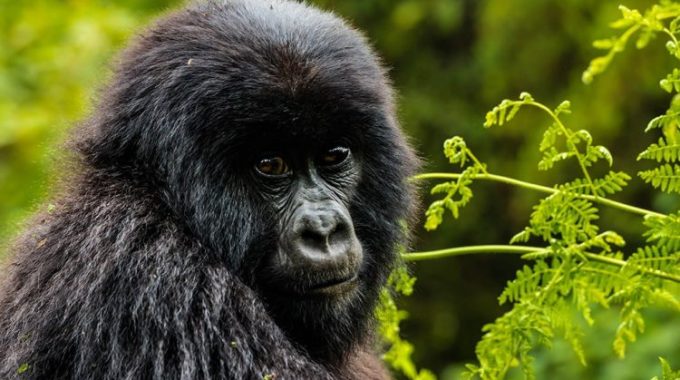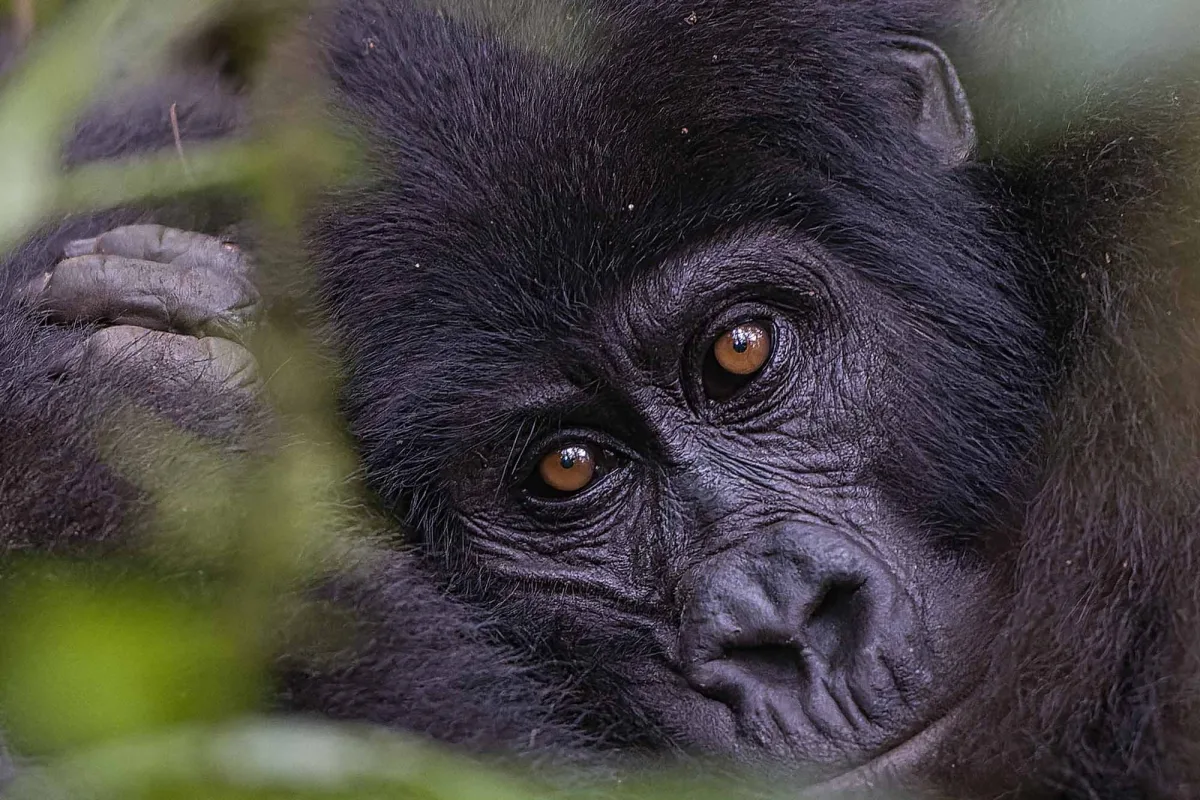
Gorilla Trekking in Rwanda Vs Uganda
Gorilla Trekking in Rwanda Vs Uganda
Gorilla trekking in Rwanda is usually recommended for visitors interesting in a short gorilla trek or have limited time.
However, Uganda is a better choice for the more budget conscious travelers and those looking for a bigger variety of activities before and after a gorilla trek.
With Rwanda focusing on high-end, low-impact tourism, its gorilla treks are generally more expensive. Rwanda is a small country that has made huge strides in tourism, it is an up and coming destination with huge ambitions and a growing list of attractions.
Contrary, gorilla permits in Uganda are much cheaper and there is a wide range of budget and mid-range accommodation. However, journey times in Uganda are longer and roads into Bwindi Impenetrable National Park and Mgahinga Gorilla National Park are bumpier.
Uganda is more accessible destination with a wide variety of additional wildlife, cultural and adventure tourism activities. However, Rwanda’ tourism industry is swiftly developed. A Uganda-Rwanda trip is a popular option.
Here are the pros and cons of a gorilla trek in Uganda and Rwanda.
Is Rwanda or Uganda better for gorilla trekking? – Weighing up the pros and cons

Gorilla trekking g experience in Rwanda is more expensive than in Uganda. Gorilla tracking permits, accommodations and services are all costlier in Rwanda, part of a concerted government effort to nurture a more exclusive, higher-end tourism industry.
As of 2025, a gorilla permit in Rwanda is $1,500 and $800 per permit in Uganda.
Gorilla Trekking in Rwanda Vs Uganda: Gorilla Permits
In Rwanda you can purchase a gorilla permit with a tour operator buy directly from the Rwanda Development Board via Irembo platform. There is no need to specify a gorilla family or accommodation.
In Uganda, gorilla permits must be bought from the Uganda Wildlife Authority via a tour operator. And you have to take note of the gorilla family you are trekking.
Gorilla Trekking in Rwanda Vs Uganda: Trekking Difficulty
In Uganda the terrain is often steep and muddy. Bwindi Impenetrable National Park is as dense as the name suggest, trekking through the jungle can be tricky and may require your guide to hack a path with matches. Gorilla families may be spread across larger areas, and treks may be an all-day undertaking. It is certainly more of an adventure but does require a level of fitness. Mgahinga Gorilla National Park has lighter, bamboo cover which is similar to Rwanda’s, but tracking is steep in places.
In Rwanda, Volcanoes National Park has a generally easier terrain to climb, except on the longer tracks which can lead you into dense forest at altitude. The misty forest is largely bamboo which creates a less dense canopy. Overall Rwanda is a generally easier-going gorilla trekking destination.
Gorilla Trekking in Rwanda Vs Uganda: Accessibility
In Uganda, it is a journey of eight to 10 hours’ drive from Entebbe International Airport to the gorilla trekking lodges. Flying options to local airstrips such as Kihihi are available and the flight is about 1 hour. From the airstrip, it is a drive of 30 minutes to the gorilla trekking areas.
Transport and access in Rwanda is much easier. It is a tow-hour driver from Kigali International Airport to Volcanoes National Park. Fly-in options to local airstrips, including helicopter transfers, are available but infrequently requested thanks to the roads in good condition and comparatively short distance.
A popular gorilla trekking option is to fly to Rwanda and drive to Uganda. It takes three to five hours to drive from Kigali International Airport to the gorilla tracking destinations in Uganda.
Gorilla Trekking in Rwanda Vs Uganda: Accommodation
Bwindi Impenetrable National Park is the main gorilla trekking destination in the country with four distinct trailheads into the forests’ interior. The location of your accommodation is therefore very important. It is recommended that you stay in a lodge near your specific starting point, so bear that in mind when you book your permit.
Note that many roads are steep and rutted so what may appear as short distances can still involve long drives.
In Rwanda, all gorilla trekking starts at the Volcanoes National Park headquarters in Kinigi. Most accommodations is within easy driving distance (10 minutes). The furthest lodges are 1.5 hours’ drive.
Gorilla Trekking in Rwanda Vs Uganda: Trip Duration
Owing to Uganda’s remote locations, you will need a minimum two-night stay in the gorilla tracking area. If you can do and enjoy Bwindi Impenetrable Forest’s waterfalls and diverse walks, meet the Batwa forest tribe and treasure the beauty of this mist rainforest, stay longer.
In Rwanda, a two night stay is recommended, although the accessibility of Volcanoes National Parks means one night (and even single day) trips are possible – but not recommended. There is a lot more to the Rwanda than seeing the gorillas.
Gorilla Trekking in Rwanda Vs Uganda: Gorilla Families
Rwanda
Rwanda has 12 habituated gorilla families open for gorilla trekking and can be visited daily by tourists. All living in Volcanoes National Park.
The biggest mountain gorilla group in Rwanda’s Volcanoes National Park is the Kwitonda family, with 35 members. Previously, the Susa group was the largest, but they have split into three smaller groups. This is not the first the Susa group has split, and they may regroup to form a larger family again
The Susa inhabit the lower base of Mount Karisimbi and are one of the more difficult groups to trek. if you are interested in an easier hike, look for the Bwenge Family near Mount Visoke, which is relatively easy hike.
The Karisimbi, Amahoro and Kwitonda families are more challenging to track, while Sabyinyo is the nearest and easiest group to reach, The guides will advise you during your morning briefing and you will be assigned to trek a gorilla family that matches your group’s fitness level and ability.
Uganda
With around 400, Uganda has the largest mountain gorillas living in two national parks in the country’s South-west; Bwindi Impenetrable National Park and Mgahinga Gorilla National Park. There are 23 habituated gorilla families that are open for gorilla trekking and visited by visitors; 22 in Bwindi Impenetrable National Park and one in Mgahinga Gorilla National Park.
The Binyindo, Habinyanja, Katwe, Kyaguliro, Mubare, Muyambi and Rudhegura families can be tracked from Buhoma in the northern sector of Bwindi Impenetrable Forest. If you have had a chance to see videos of human encounters with gorillas in the grounds of a lodge in Bwindi, it is most likely in Buhoma. This is Bwindi’s first and most developed trekking site with a wide range of accommodation and fantastic views of the rainforest. Trekking in Buhoma is generally easier than it can be from the three other trailheads. Also, Buhoma is a good base for visits to local communities.
Gorilla families living around Ruhija, on the eastern edge of Bwindi Impenetrable National Park include Bitukura, Mishaya, Mukiza and Oruzogo families.
In South-west of Bwindi Impenetrable National Park is the Rushanga Sector, home to the Bikingi, Busingye, Bweza, Kahungye, Kutu, Mishaya, Mucunguzi, Nshongi families. In Nkuringo Sector, there are Bushaho, Christmas and Nkuringo families. In addition to panoramic views of Bwindi Impenetrable Forest, Nkuringo Sector has views of the dramatic Virunga Volcanoes.
Mgahinga Gorilla National Park has more than 80 mountain gorillas but has just one habituated gorilla group, the Nyakagezi Family.
Because gorilla families in Uganda are scattered across various locations, it is very important that you book accommodation that is not too far from the park’s entrance, otherwise you may have to drive for an hour or more before your 7:00 am registration and briefing.
This is one of the main advantages of booking your safari with a reputable tour operator as they know all the lodges and all the gorilla families and can make the best possible match for your interests, budget and hiking ability.
